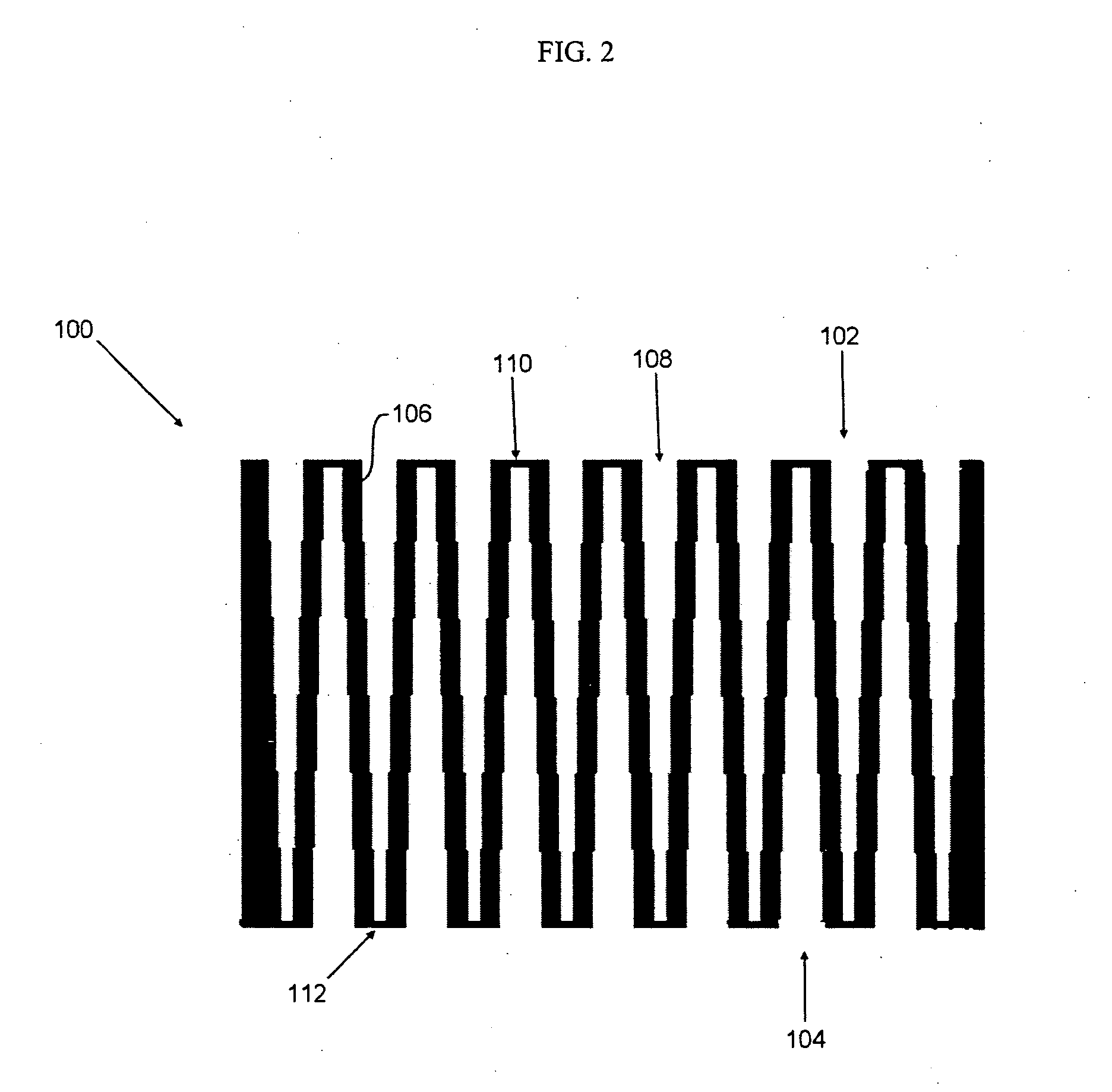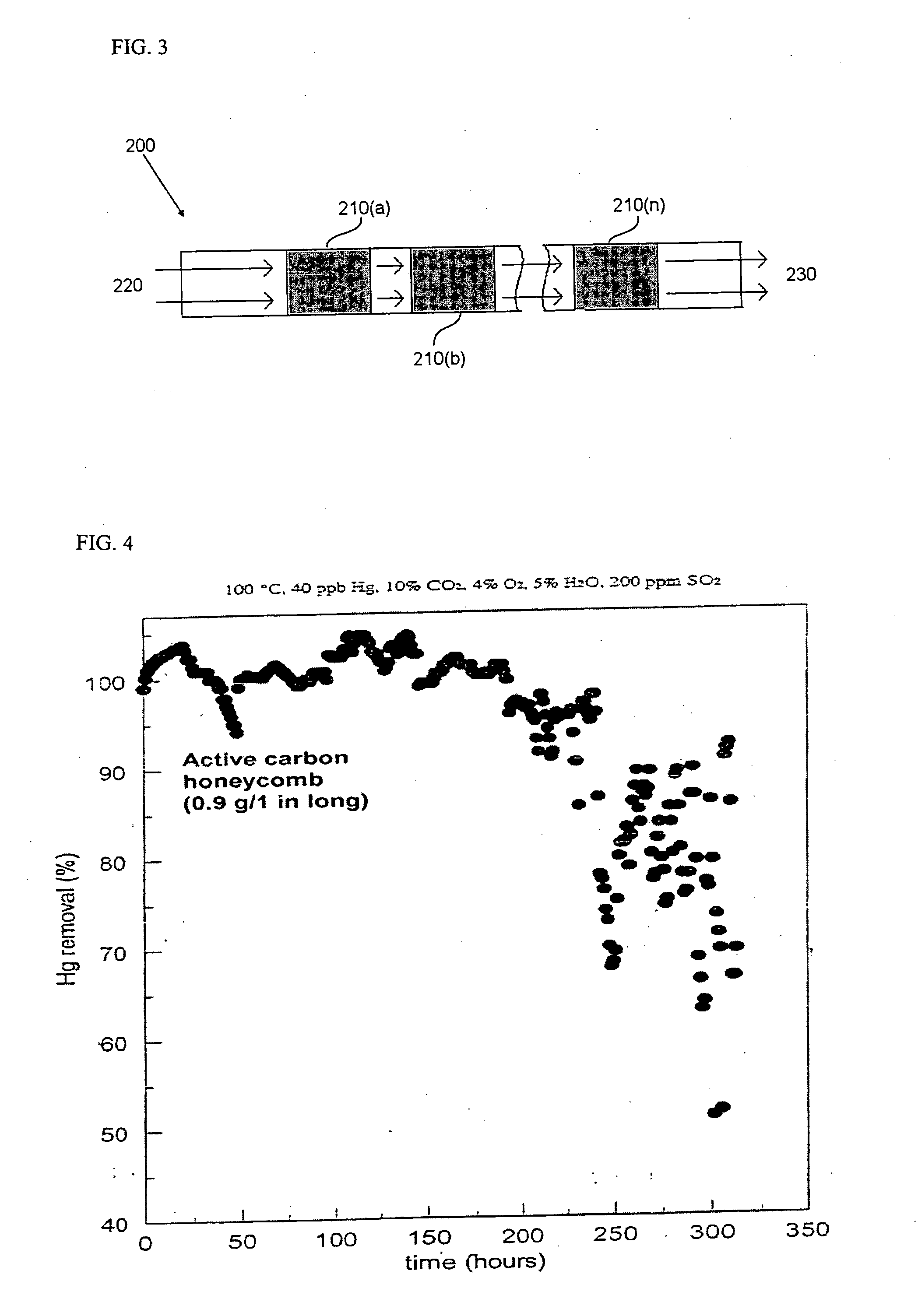Activated carbon honeycomb catalyst beds and methods for the manufacture of same
a technology of activated carbon honeycomb and catalyst beds, which is applied in the direction of chemistry apparatus and processes, dispersed particle separation, separation processes, etc., can solve the problems of irritability, erethism (increased excitability), tremors, and tremors, and achieves the effect of simple design
- Summary
- Abstract
- Description
- Claims
- Application Information
AI Technical Summary
Benefits of technology
Problems solved by technology
Method used
Image
Examples
example 1
Evaluation of Activated Carbon Honeycomb Sorbent
[0066] An activated carbon honeycomb monolith was prepared comprising 0.9 g activated carbon and a surface area of about 900 m2 / g. The geometry of formed honeycomb was 450 cells / in2. with a cell wall thickness of 0.006″. The size of the honeycomb was 1″ long with diameter of 0.5″. The honeycomb was prepared by mixing the batching material, extruding the mixed material through spaghetti die and finally extruding the spaghetti through honeycomb die. The batching material used for making the honeycomb in Example 1 contained 13.4% cordierite power, 49% phenolic resin (GP510D50), 9.8% sulfur powder (−325 mesh), 4.1% Methocel (A4M), 19.81% cellulose fiber (BH-40), 0.98% sodium stearate, 2% phosphoric acid, 1% 3-in-1 oil. The extruded honeycombs were cured at 150° C. over night. The cured honeycombs were carbonized at 900° C. in nitrogen for 4 hours and activated in carbon monoxide for 3 hours. A solution containing potassium iodide and iron...
example 2
Evaluation of Activated Carbon Honeycomb Sorbent in a Simulated Flue Gas
[0068] An activated carbon honeycomb approximately 1″ long and 0.75″ in diameter, with geometry of 450 cells / in2 was placed in a temperature controlled oven. The honeycomb was prepared according to the procedure set forth in Example 1.
[0069] The honeycomb was tested in a simulated flue gas containing 174 μm / m3 Hg, 4 ppm HCl, 213 ppm SO2, 4% O2, 10.7% CO2 and 5% water. The mercury levels in the simulated flue gas were measure at temperatures of 110° C. and 140° C. Using the prepared honeycomb, mercury in the flue gas was almost completely (>90%) removed at both temperatures as shown in FIG. 5. In particular, the three peaks between 70 hour and 130 hours indicate the times during which mercury levels were measured in the system.
PUM
| Property | Measurement | Unit |
|---|---|---|
| Fraction | aaaaa | aaaaa |
| Fraction | aaaaa | aaaaa |
| Fraction | aaaaa | aaaaa |
Abstract
Description
Claims
Application Information
 Login to View More
Login to View More - R&D
- Intellectual Property
- Life Sciences
- Materials
- Tech Scout
- Unparalleled Data Quality
- Higher Quality Content
- 60% Fewer Hallucinations
Browse by: Latest US Patents, China's latest patents, Technical Efficacy Thesaurus, Application Domain, Technology Topic, Popular Technical Reports.
© 2025 PatSnap. All rights reserved.Legal|Privacy policy|Modern Slavery Act Transparency Statement|Sitemap|About US| Contact US: help@patsnap.com



